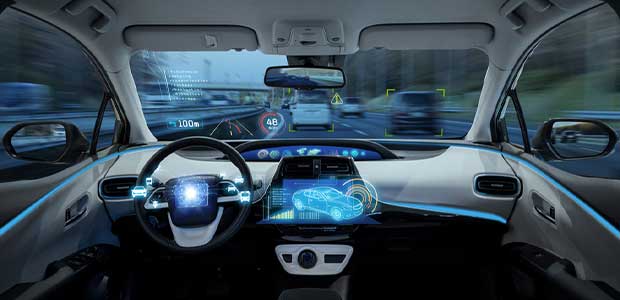
An Insight to the Safety of Autonomous Vehicles
Knowing the safety performance of these vehicles is important for the conversation of implementing this technology in the workplace.
- By Alex Saurman
- Jun 21, 2022
In recent years, autonomous vehicles have talked about more and more than before. As automated technology advances, so does its potential use for many companies.
In 2021, according to the Bureau of Labor Statistics, 12.6 million people were employed in the transportation and material moving industries. Some companies are starting to test the use of autonomous vehicles, like Google. This year, Google Parent company Alphabet announced that autonomous vehicles will be transporting employees around in California, according to an article by CBS News. A few years ago, Tesla unveiled its idea for an autonomous semi-truck.
The advancement of these technologies have many companies talking and asking questions. How will this affect transportation workers? What are the worker safety concerns? What is the best way to use the technology? Although the degree of impact these vehicles will have on companies and workers is not known yet, one thing that we need to consider is the safety performance.
Last week, the National Highway Traffic Safety Administration (NHTSA) published data on the “safety performance of advanced technology vehicles.” These reports cover SAE Level 2 advanced driver assistance systems (ADAS) and SAE Levels 3 through 5 Automated Driving Systems. According to the ADAS report, these vehicles “provide both speed and steering input when the driver assistance system is engaged but require the human driver to remain fully engaged in the driving task at all times.” ADS vehicles between levels 3 and 5 involve less human interaction.
According to an NHTSA press release, SAE L2 ADAS-equipped vehicles were in 116 reported crashes with another vehicle and four crashes with a “vulnerable road user.” Less than a dozen crashes resulted in “alleged serious injures or a fatality.”
For the ADS-equipped vehicles, 130 crashes were reported. Of these, 108 crashes were with another vehicle and 11 were with a “vulnerable road user, such as a pedestrian or cyclist.” One crash resulted in serious injuries, and 108 resulted in no injuries.
The National Safety Council (NSC) released a statement about the publication of this data. “NSC has long supported safety reporting, including greater transparency around the effectiveness of advanced technology in preventing crashes. NSC also knows these data are necessary to inform the changes this country must see on our roadways, such as performance-based requirements for ADAS technology as well as vehicle design changes to ensure protection for people outside the vehicle,” NSC said.
About the Author
Alex Saurman is a former Content Editor for Occupational Health & Safety,who has since joined OH&S’s client services team. She continues to work closely with OH&S’s editorial team and contributes to the magazine.